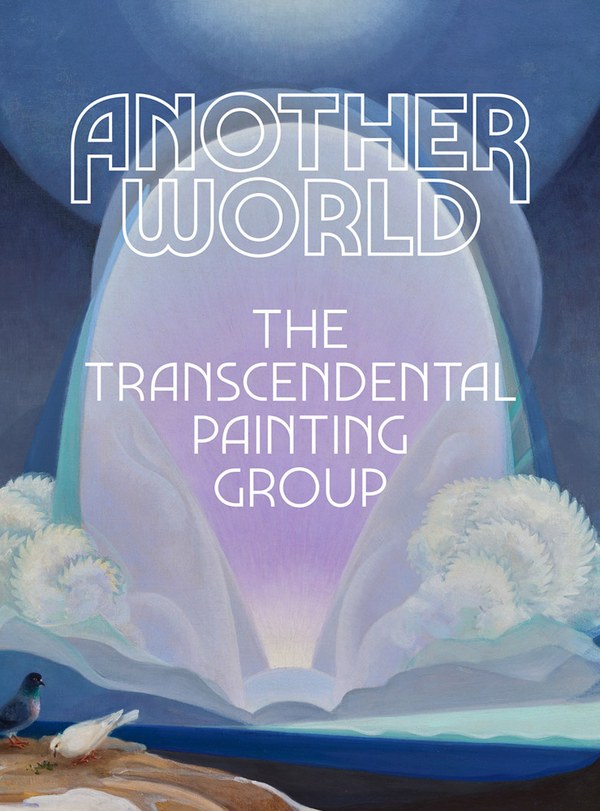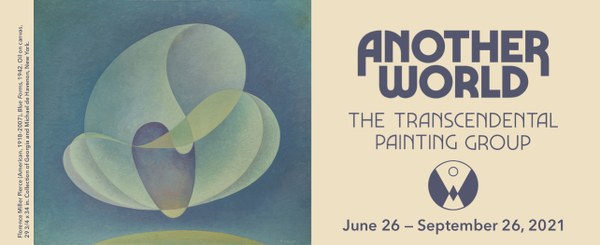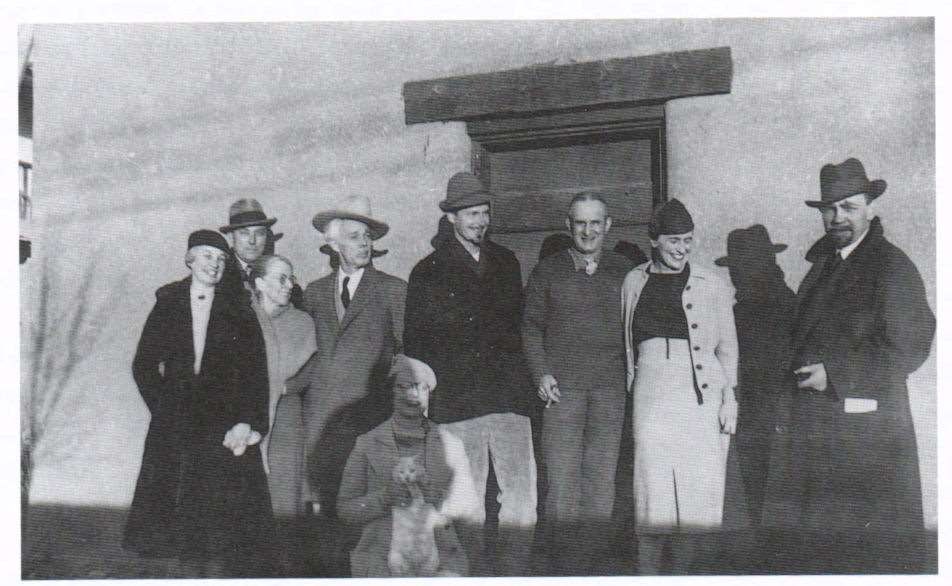Another World: The Transcendental Painting Group
June 26–September 26, 2021
Florence Miller Pierce (American, 1918-2007), Blue Forms, 1942, oil on canvas, collection of Georgia and Michael de Havenon, New York
The Transcendental Painting Group (New Mexico, 1938): Bess Harris, R. S. Horton, Bisttram´s mother, Lawren Harris, Marion Bisttram, Robert Gribbroek, Emil Bisttram, Isabel McLaughlin, and Raymond Johnson
An exhibition catalog featuring essays by Michael Duncan, Scott Shields, and MaLin Wilson Powell was available for purchase through the Museum Store. 240 pages. $60

Towards the end of the Great Depression, a loose configuration of artists organized to discuss and perpetuate an alternative to the social realism and homespun Americana that had been promoted by Regionalism and the Ash Can school. Initiated in Taos in 1938, the Transcendental Painting Group formed to explore a heightened vision of the American landscape, employing free-wheeling symbols and imagery drawn from the collective unconscious to depict a transfigured, spiritually alive America. Drawing as well on the non-objective experimentation of Wassily Kandinsky, along with other American modernists, these artists sought to evoke sensuous, synesthetic experiences of nature and the cosmos, often using references to music and esoteric philosophies.
Under the guidance of painters Raymond Jonson and Emil Bisttram, other artists affiliated with Transcendental Painting Group were Agnes Pelton, Lawren Harris, Florence Miller Pierce, Horace Pierce, Robert Gribbroek, William Lumpkins, Dane Rudhyar, Stuart Walker, and Ed Garman. All worked in New Mexico except Pelton, who lived in Southern California.
The Transcendental Painting Group artists issued a manifesto stating that their purpose was "to carry painting beyond the appearance of the physical world, through new concepts of space, color, light and design, to imaginative realms that are idealistic and spiritual." Formally experimental, the Transcendental Painting Group painters often used geometric compositions similar to those of Constructivism and the Bauhaus, though their richly chromatic depictions of form celebrate musical rhythms and auratic light often missing from those earlier paintings.
Transcendental Painting Group art was also not just formal but sought to embody a higher spiritual reality following ideas gleaned from theosophical writings and concepts. Although relegated to the margins in later twentieth century thought, Theosophy was a crucial influence on the century's early artists and writers. The Transcendental Painting Group was particularly inspired by Theosophical writings, the works of Kandinsky, and the mystical philosophy and paintings of Russian emigré Nicolas Roerich and others.
Another World: The Transcendental Painting Group was organized by the Crocker Art Museum, Sacramento, CA; curated by Michael Duncan.
This exhibition was made possible with support from the Henry Luce Foundation.
Agnes Pelton’s Spiritual Abstraction
Delve into Pelton’s personal history, the influence of California New Age on her work and her place within the context of occult artists and thinkers in this talk by curator Gilbert Vicario. Vicario was the curator of a recent exhibition, Agnes Pelton: Desert Transcendentalist, the first survey of the painter in more than twenty two years. A virtual talk presented by Albuquerque Museum premiered on July 11, 2021.



